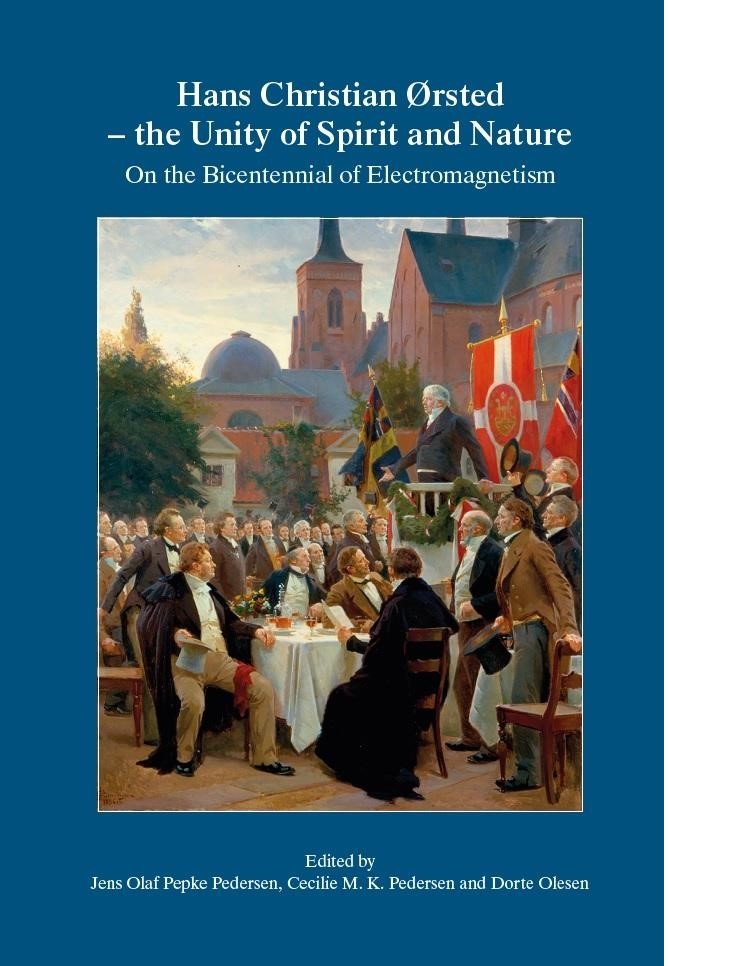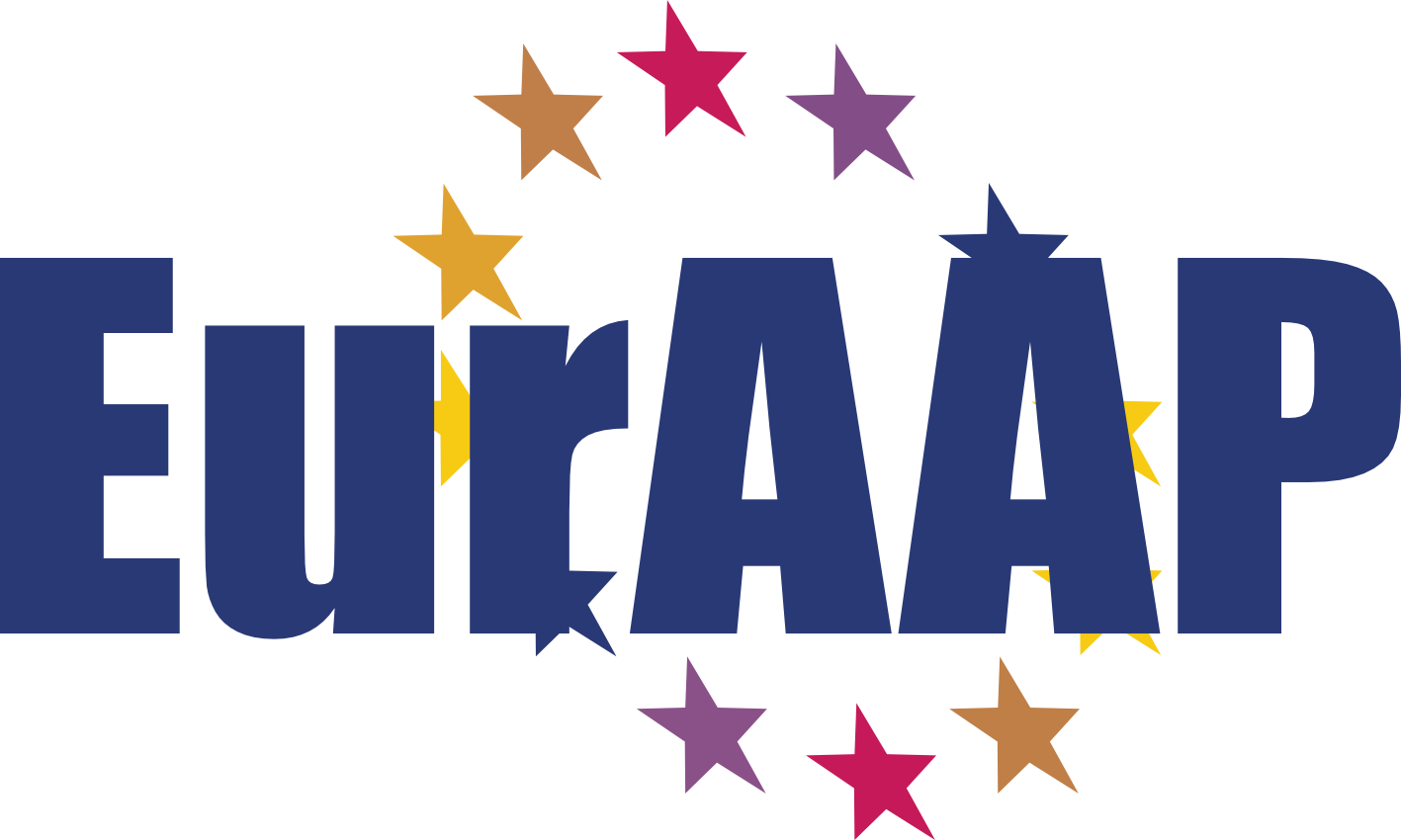H.C. Ørsted’s Discovery 1820
The discovery of electromagnetism by Hans Christian Ørsted in 1820
By the end of 18th century a great variety of electric and magnetic phenomena had been noticed by scientists, but it was generally believed that they had nothing whatsoever to do with each other. Electricity essentially meant static electricity, batteries and galvanism, as well as lightning. Magnetism, on the other hand, dealt with bar magnets and the ancient lore of lodestone, compass needles, and Earth’s magnetic field, with no obvious connection to electricity. However, this perception was entirely revolutionized in 1820 when the Danish scientist Hans Christian Ørsted showed that a magnetic compass needle was deflected away from the Earth’s North Pole, where it normally pointed, when an electric current was passed through a near-by wire oriented in parallel with the needle. It was clear to Ørsted that the electric current caused a force on the magnetic needle and thus that a relationship exists between electricity and magnetism. Ørsteds discovery demonstrated indeed an inextricable and intimate link between electricity and magnetism. The two fundamental forces of electricity and magnetism where from now on to be regarded as a single force manifested through a new field of physics which Ørsted named electromagnetism.
Ørsted published his results on July 21, 1820 in a pamphlet consisting of four pages of Latin which was soon translated to major European languages. The English version of the paper was entitled Experiments on the Effect of a Current of Electricity on the Magnetic Needle. On his own initiative, Ørsted distributed his work to various scientists and scientific societies outside Denmark. While his discovery caused an immediate sensation in the scientific world, inevitably raising his scientific standing, many of the most notable physicists of that era were, however, strongly skeptical since his results were in sharp opposition to the generally accepted theories on electricity and magnetism of that time. Nevertheless, the discovery never came as a surprise to Ørsted himself who, for long time before 1820, searched for a link between electricity and magnetism. In fact, the whole idea of the existence of electromagnetism was well in agreement with Ørsteds philosophy that all of nature is unified and should, as such, have a firm common ground and understanding.
Hans Christian Ørsted was born in 1777 in Rudkøbing, Denmark. At the age of 22, he obtained a Ph.D. degree in philosophy from the University of Copenhagen. He became a professor in physics at the University of Copenhagen in 1806. He was one of the main actors behind the establishment of the Polytechnic Institute in Copenhagen in 1829, today known as the Technical University of Denmark, of which he was the first president. Ørsteds discovery of electromagnetism has greatly affected our understanding of science and physics. It has inspired other brilliant minds such as Ampère, to work on the mathematics linking electric currents with magnetic fields, and Faraday, to discover the ingenious principle of electromagnetic induction, and Maxwell, to merge electromagnetism with optics in his crowning theoretical discoveries, as well as Einstein, to coin his special relativity theory with deep historical roots in electromagnetism. In addition hereto, Ørsteds discovery has certainly set the stage for the development of our modern world which so heavily relies on electromagnetism. As Nobel Laurate Richard Feynman puts it, even the phenomena “of life itself are to be understood in terms of electromagnetism”. Hans Christian Ørsted died in Copenhagen in 1851 at the age of 74 after a short illness.
H.C. Ørsted – Anniversary Book
 H.C. Ørsted and his discovery of electromagnetism in 1820 are celebrated in Denmark throughout 2020. One of the great initiatives to promote awareness of his work is the excellent anniversary book “Hans Christian Ørsted - the Unity of Spirit and Nature” published recently by KVANT and the Society for Dissemination of Natural Science (a society established by Ørsted himself in 1824). The book contains a very nice collection of articles from a number of humanists and scientists that portray the life, work, and legacy of Ørsted, as well as the influence of electromagnetism on our modern society at large.
H.C. Ørsted and his discovery of electromagnetism in 1820 are celebrated in Denmark throughout 2020. One of the great initiatives to promote awareness of his work is the excellent anniversary book “Hans Christian Ørsted - the Unity of Spirit and Nature” published recently by KVANT and the Society for Dissemination of Natural Science (a society established by Ørsted himself in 1824). The book contains a very nice collection of articles from a number of humanists and scientists that portray the life, work, and legacy of Ørsted, as well as the influence of electromagnetism on our modern society at large.
The book is dedicated to Her Majesty Queen Margrethe II of Denmark, on the occasion of her 80th Birthday on April 16, 2020.
A pdf file of this book is available to all EuCAP 2020 conference participants.
A physical hardback version of the book can be purchased through Polyteknisk Boghandel; find more information here.











